The appearance of ToBRFV (Tomato Brown Rugose Fruit Virus) on growing sites all over the world worries the industry. In Italy, where the virus has been found in the Southern region Sicily, a congress was organised to discuss the issue. Virologist Walter Davino explained that everything revolves around the implementation of specific practices in the whole chain, starting with the seed companies.
 The speakers' table. Left to right: Lipparini, Davino, Di Mauro, Panno and D'Anna.
The speakers' table. Left to right: Lipparini, Davino, Di Mauro, Panno and D'Anna.
ToBRFV
ToBRFV is popping up in more horticultural places. ToBRFV is a relatively new virus and is related closely to TMV and ToMV. Almost all current available tomato varieties are resistant to both TMV and TOMV, but this new virus broke the resistance. The symptoms are similar to the PepMV.
After findings of the Tomato brown rugose (ToBRFV) fruit virus in Germany, California, Mexico and Sicily, the Italian industry started researching the virus extensively. Researchers have presented their results in the "I virus del pomodoro: La prevenzione, la migliore difesa" (Tomato viruses: prevention is the best defense) convention.
Alberto Lipparini, secretary of Assosementi, the Italian organisation of breeding companies explained the urgence of the situation. "The discovery of a new virus in Sicily which is particularly harmful for tomatoes and peppers is worrying all operators. Seed companies firmly believe in the need to work as a team and contain the spreading of this dangerous pathogen."
Since ToBRFV was found in Sicily, the industry has immediately reacted: provided information and training to operators in the areas affected. "Thanks to the professionalism and availability of prof. Walter Davino from the University of Palermo, we organised two meetings for technicians, producers and sectors operators. The first was held in Pachino on 27th February and the second took place in Vittoria on 28th February", Alberto tells.
350 people attended from all over Sicily as well as from other regions to listen to some of the most qualified speakers in the country in the PromoTerGroup convention room. Seed companies, producers, nursery gardens and distributors attended as well as the region's phytosanitary offices and the University of Palermo.
"Seed companies firmly believe they need to work as a team to contain the spreading of a dangerous pathogen for which there does not seem to exist a solution. Prevention and good hygiene and agronomic practices represent everything that can be done", says Alberto.
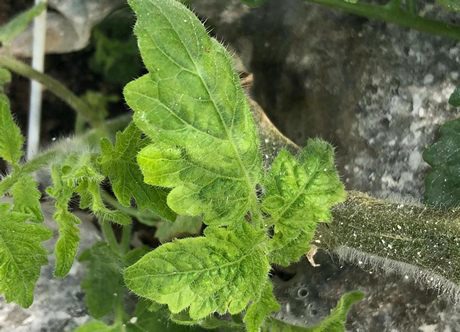 A leaf affected by ToBRFV.
A leaf affected by ToBRFV.
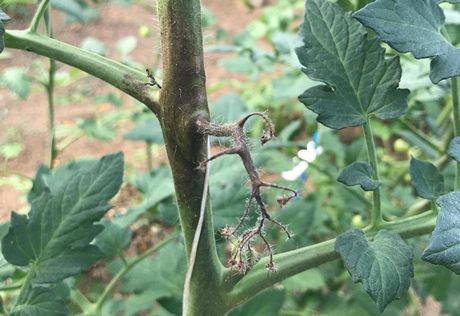 The stem of infected plants can present browning or necrosis
The stem of infected plants can present browning or necrosis
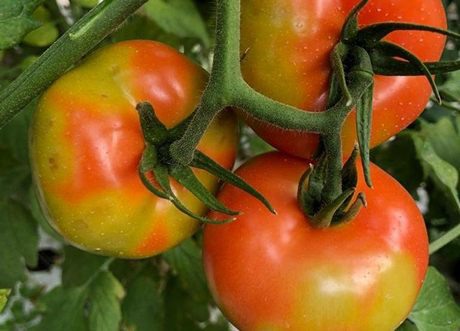 Notice the characteristic changes in color in the photo above
Notice the characteristic changes in color in the photo above
Prevention
"While waiting for the new virus to be characterized and for containment measures to be put in place (i.e. identification of tolerant or resistant varieties), the only solution is prevention."
Assosementi shares this need and believes all operators - seed companies, nursery gardens and producers - must implement all hygiene and prevention measures necessary. "In this context, Institutions, the Regional Phytosanitary Service in particular, must do their part by monitoring the territory to assess the spreading of the pathogen and define interventions to counter its diffusion."
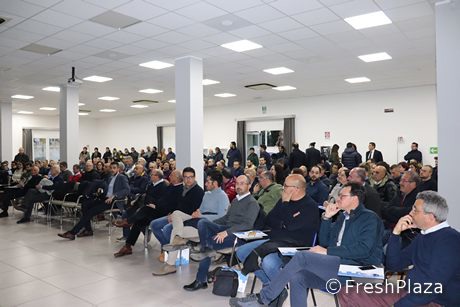 The audience filled the room. The conference was sponsored by Assosementi, Road to Quality and Ecofaber. The convention was moderated by Biagio di Mauro, with Ispettorato agrario di Caltanissetta, after the greetings by Giorgio Carpenzano, IPA Ragusa manager.
The audience filled the room. The conference was sponsored by Assosementi, Road to Quality and Ecofaber. The convention was moderated by Biagio di Mauro, with Ispettorato agrario di Caltanissetta, after the greetings by Giorgio Carpenzano, IPA Ragusa manager.
What to do?
Virologist Walter Davino explained that everything revolves around the implementation of specific practices, starting with the seed companies. "None of the actors (seed companies, nursery gardeners, producers, distributors) can avoid implementing all preventive containment measures: if only one link of the chain fails, it risks putting the entire Sicilian tomato production at risk."
Seed companies
"Seed companies must try to produce seeds in unaffected areas and perform periodical analyses on parent plants and hybrids. In addition, seeds must travel with a specific phytosanitary certificate."
Nursery gardens
"They must inspect plants regularly. Operators should not be working in production greenhouses at the same time and containers and soil residues that housed infected plants should be sterilized or destroyed. In addition, workers must wear clean disinfected clothing and tools."
According to Walter, things are more complicated for production companies "As procedures depend on whether crops are healthy or infected."
In the second case, they need to carefully remove all plants that present the symptoms and destroy them by burning them. "At least 20 plants around the infected ones must also be removed. Each infected greenhouse must be managed using specific protection and work attire. Never start working on an infected greenhouse, leave it for last."
"Clean clothing must be worn every day and mats soaked in disinfectant must be put in place. In addition, disinfectant dispensers must be placed at all entrances. Never assume asymptomatic plants are healthy. Small tools can be disinfected by soaking them in a non-fat powdered milk solution. Operators working in healthy greenhouses must not come into contact with those working in infected ones."
At the end of the cycle, plant and soil residues must be burned and greenhouses must be thoroughly disinfected in all their parts. "Solarization is not sufficient, as it does not bring the material to 80°C."
Distribution
"Distributors must check the status of the goods that come into our country.They need to collect samples from inbound goods and always demand a phitosanitary certificate attesting the absence of the virus. In addition, they must thoroughly sterilize vehicles, containers and crates", Walter concluded.
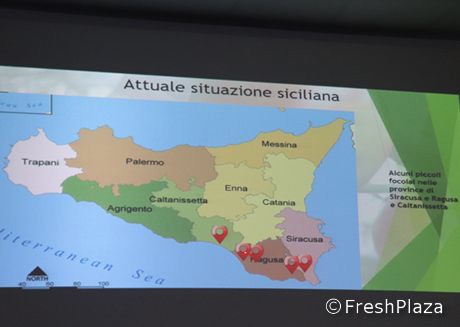 The areas most affected by ToBRFV.
The areas most affected by ToBRFV.
The Italian data presented
Sebastiano Vona from SFR Ragusa talked about the activities of his office. "The objectives of phytosanitary surveillance are to safeguard and monitor the territory. We also collect samples all over the Ragusa territory. In the period in question, the absence of the typical symptoms of the disease was visually ascertained. We need to focus on managing the problem limiting drastic measures such as uprooting."
Ever since the discovery of the virus in Italy, 461 seed batches, 2080 plantlets and 54 open-field plants were analysed. The data that emerged is interesting: transmission of the virus is extremely low for seeds and, most of all, there are not many contaminated seeds: only 36 out of 461 batches were positive to this pathogen.
Transmission is very low for plantlets as well, as 6 plantlets our of 2080 were positive, meaning seed-plant transmission is 0.29%.
The situation in open fields is far more dangerous, as plant-plant transmission is due to many factors - plants touching, operators and pollinator insects.The incidence can reach 94-95%.
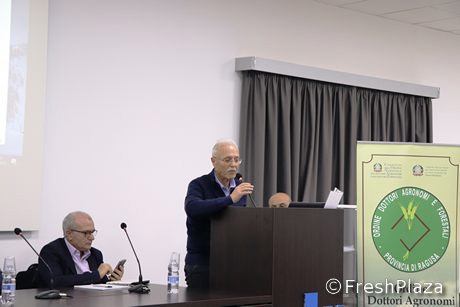 Franco Celestre, president of the Ragusa Order of Agronomy and Forestry
Franco Celestre, president of the Ragusa Order of Agronomy and Forestry
Hygiene rules
During the event, Stefano Panno from UniPA talked about the PhytoCARD: a sort of handbook drafted by Assosementi and Road to Quality that explains the healthy and hygiene rules that must be complied with in fields, greenhouses, etc.
By analyzing known viruses as TYLCD and ToMV, Panno warned about how easy it is to mistake the most recent ToBRFV for these viruses.
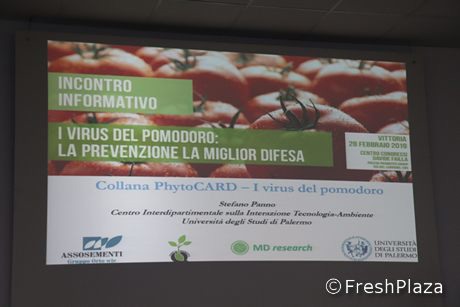
Transmission & monitoring
Virologist Davino focused on the transmission of the ToBRFV, discussing how the infection spreads: "Mechanical transmission is the most dangerous and is carried out by operators and pollinator insects. The virus is highly stable in the ground and waste vegetable material, while it is less transmissible via seed."
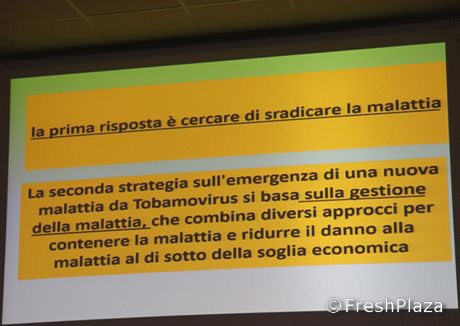
Commercialisation of youngplants
Rosario D'Anna, manager responsible for SFR's nursery activities, talked about the regulations for the commercialization of the material.
"At the moment, the ToBRFV is not yet among the diseases requiring quarantine, but I've been pushing for it to be, as it is difficult to understand where seeds come from, which represents a hazard. In the meantime, we have identified the Sicilian companies affected and we have instructed them to destroy the contaminated material."
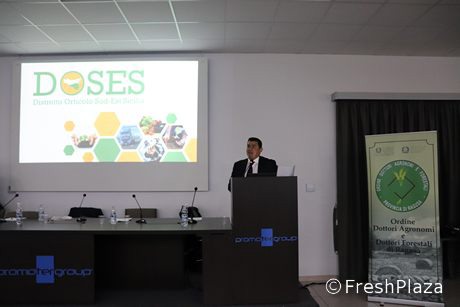
New virus
Doses director Gianni Polizzi (in the photo above) stressed the importance of an association as an integral part of a chain that is unfortunately affected by a series of critical issues - from scarce competitiveness, low business management capabilities and market problems to a scarce valorization of research."
"The convention is proof that working together is essential to tackle problems. The sector cannot work as different compartments, it needs the support of each single component."
